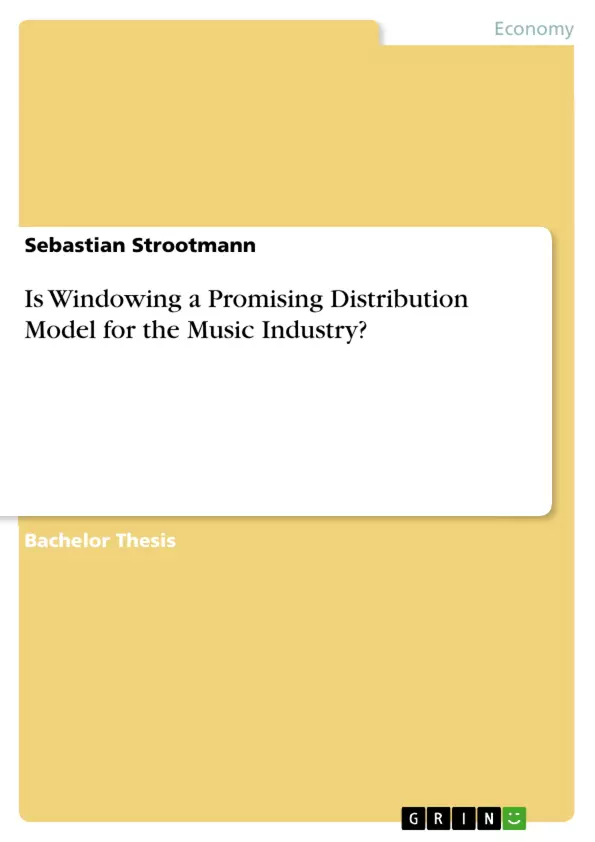The object of this bachelor thesis is to analyze if windowing could work as an eligible distribution model for the music industry. Methodically, it includes a literature overview based on the use of windowing within the movie industry, where this distribution model has been applied for several decades and still finds application today. The report procures a conceptual framework for sequential distribution and its success factors, supplemented by the examination of necessary knowledge regarding the music business and respective aspects such as the current distribution practices. It provides an approach for a possible configuration of windowing as a distribution model for the music industry. The analysis of eligibility itself is conducted with help of an evaluation of the chances and risks that would go along with an implementation of the distribution model.
Findings lead to the general possibility of windowing in the music industry, but point out that applying this distribution model is accompanied by a high number of risks that have to be carefully traded against the potential gains reached by these actions. This thesis recommends to pay attention to different factors such as genre and target market and to examine which specific player within the supply chain should benefit from the changes in the distribution model.
Like in most industries, managers in the music industry have to ensure the profitability of their business model and are forced to adjust their decisions and actions while steadily paying attention to the changes and development on the market. As the behavior of music consumption has changed rapidly since the beginning of the 21st century, profitability is highly endangered by new distribution channels with their special requirements and lower revenues.
Inhaltsverzeichnis (Table of Contents)
- 1 Introduction
- 2 Conceptual Framework
- 2.1 Sequential Distribution in the Movie Industry
- 2.2 Success Factors
- 2.3 Distribution Models in the Music Industry
- 2.3.1 Classification of Current Distribution Practices
- 2.3.2 Ownership, Access and Context Model
- 2.4 Approach for Windowing as a Distribution Model for the Music Industry
- 3 Application of Windowing in the Music Industry
- 3.1 Analysis of Capability for the Music Industry
- 3.1.1 Chances of Windowing
- 3.1.2 Risks of Windowing
- 3.2 Current Practical Appearance of Windowing in the Music Industry
- 4 Conclusion
Zielsetzung und Themenschwerpunkte (Objectives and Key Themes)
This bachelor thesis aims to analyze the potential of windowing as a distribution model for the music industry. The study draws on insights from the movie industry, where windowing has been successfully implemented for decades. The objective is to evaluate the feasibility of windowing in music, considering its inherent risks and potential benefits.
- Sequential distribution models and their success factors
- Current distribution practices in the music industry
- Challenges and opportunities of implementing windowing in music
- Analysis of the potential benefits and risks associated with windowing
- Evaluation of the applicability of windowing to different music genres and target markets
Zusammenfassung der Kapitel (Chapter Summaries)
The first chapter provides an introduction to the research topic and outlines the thesis's objectives. Chapter 2 delves into the conceptual framework of windowing, drawing upon the movie industry's experience. It explores the success factors of sequential distribution and analyzes the current distribution models in the music industry. Chapter 3 examines the applicability of windowing to the music industry, assessing its potential benefits and risks. This chapter also investigates the current practical implementation of windowing in the music industry.
Schlüsselwörter (Keywords)
This study focuses on the distribution model of windowing in the music industry, examining its feasibility and impact. It draws upon concepts like sequential distribution, success factors, and current distribution practices in the music industry, while also analyzing the potential benefits and risks of windowing.
- Citation du texte
- Sebastian Strootmann (Auteur), 2016, Is Windowing a Promising Distribution Model for the Music Industry?, Munich, GRIN Verlag, https://www.grin.com/document/489125



